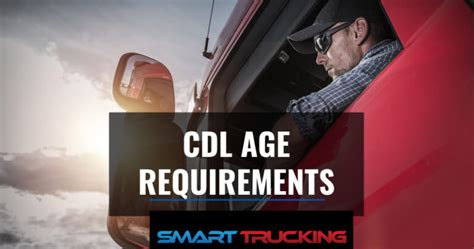The Surprising Truth About Trucking Age Limits: More Than Just a Number
The trucking industry is the backbone of the American economy, moving goods across the country and keeping shelves stocked. But behind the wheels of these massive vehicles are drivers, and the age at which they can legally operate them is a subject of ongoing debate and surprising complexity. This isn't just a simple matter of "older is wiser"; it's a multifaceted issue involving safety regulations, economic realities, and the evolving demographic landscape of the trucking workforce.
What are the Current Trucking Age Limits?
The most commonly known age limit is 21 years old. This is the minimum age for interstate commercial drivers in the United States, a rule established by the Federal Motor Carrier Safety Administration (FMCSA). This regulation applies to drivers operating commercial motor vehicles (CMVs) in interstate commerce, meaning they cross state lines. However, there are nuances:
- Intrastate trucking: Some states allow drivers younger than 21 to operate CMVs within their state borders, but these are subject to individual state regulations and may have restrictions on the type of cargo or routes allowed.
- Military exceptions: The FMCSA offers exceptions for military personnel who have obtained a commercial driver's license (CDL) while serving, allowing them to operate CMVs for civilian purposes before reaching the age of 21.
Why is the Age 21? A Deep Dive into Safety and Experience
The 21-year-old minimum age isn't arbitrary. The FMCSA bases it on research indicating that younger drivers have higher crash rates. Maturity, experience, and better risk assessment are cited as contributing factors to the improved safety record of older drivers. This is not to say that all drivers under 21 are unsafe, but statistically, the risk is higher.
The age limit is a part of a larger safety framework that includes:
- Rigorous CDL testing: Obtaining a CDL requires extensive training and passing written and driving tests demonstrating competency in handling large vehicles.
- Hours-of-service regulations: These regulations limit the number of hours drivers can work in a given period to prevent driver fatigue, a significant contributing factor to accidents.
- Background checks and drug testing: The industry has stringent measures to ensure drivers maintain professional standards and are free from substances that could impair driving ability.
How Does the Age Limit Affect the Trucking Industry?
The 21-year-old age limit contributes to the current driver shortage plaguing the industry. With an aging workforce and fewer young people entering the profession, this restriction further limits the available pool of qualified drivers. This shortage leads to:
- Increased shipping costs: The demand for drivers outweighs the supply, pushing up wages and impacting the overall cost of transportation.
- Delayed deliveries: Shortages can cause significant delays in getting goods to their destinations.
- Pressure on existing drivers: The current drivers are overworked, increasing the risk of accidents due to fatigue.
What About Younger Drivers? Opportunities and Challenges
While the 21-year-old limit is firmly in place, there's ongoing discussion about alternative pathways for young people interested in trucking careers. Some suggestions include:
- Apprenticeships and mentorship programs: Providing structured training and on-the-job experience under the supervision of experienced drivers could help mitigate safety concerns.
- Graduated licensing systems: A system similar to car licensing, where younger drivers start with limitations and progressively gain more responsibilities as they gain experience, is another option being explored.
Are There Exceptions to the Rule? (Military and Intrastate)
Military Exceptions: As mentioned previously, veterans who have gained CDL experience in the military often receive exemptions. This acknowledges their rigorous training and experience operating large vehicles under demanding circumstances.
Intrastate Trucking: The rules are much more relaxed for intrastate trucking. This difference is critical; aspiring truck drivers must understand the distinction between driving within a single state and crossing state lines. Individual state regulations must be reviewed carefully.
The Future of Trucking Age Limits: A Look Ahead
The trucking age limit is a complex issue with no easy answers. Balancing safety concerns with the need to address the driver shortage requires careful consideration. The debate is likely to continue, with ongoing research and evolving industry practices shaping the future of trucking age limits. We may see a gradual evolution of regulations, perhaps incorporating more flexible training and licensing models to attract younger talent while maintaining the highest safety standards.

